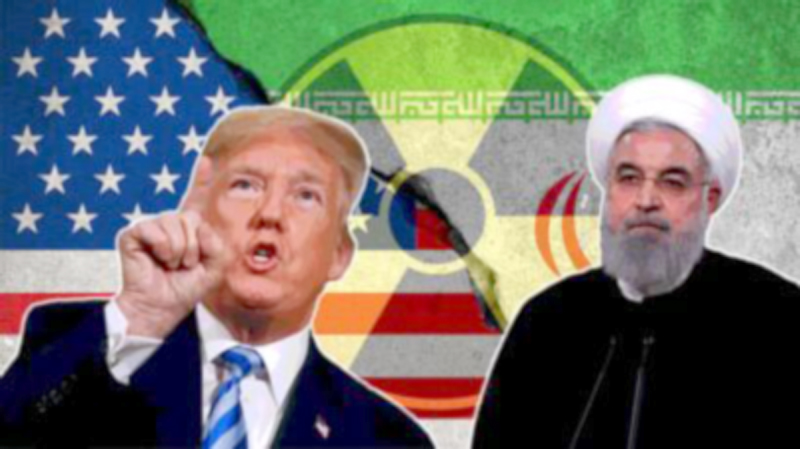By General Mirza Aslam Beg
The dialectics of the “opposing will” define the logic of a conflict and not the weapon of war, as the Post Diehl reports:
“Israel has apparently been conducting what amounts to a slow motion, semi-covert military campaign against Iran’s nuclear and missile programmes, and perhaps other industrial and infrastructure targets as well. Mysterious explosions and fires have struck a key centrifuge production facility, a military base where missiles are produced, as well as power plants, aluminum and chemical factories, and a medical clinic. Last week, a fire erupted at the port of Bushehr on the Persian Gulf, destroying seven ships.” The Israelis were not particularly shy about distancing themselves from these activities.”
It appears that, through such tricks, Israel is trying to ward-off the threat. On the contrary they need to have a serious look at the February 2020 message of peace:
“In 2006, Israel was warned well in time about the threat from Hezbollah’s free-flight rockets, but they did not care and suffered a shameful defeat.”
“Similarly, in February 2020, they were again warned about the new kind of asymmetric war lurking over Israel, against which the Israeli army had no defense. In this case the war would begin with massive use of free flight rockets, missiles and drones from several directions to degrade the iron-dome air defense system as well as the public morale, followed by explosive loaded vehicles to breach the barrier at multiple places and the suicide bombers in thousands would rush forward through the breaches to cause fear, panic and rout to the enemy.”
Luckily, this warning created the desired effect and the forces of aggression pulled back, yet the tricks being played now, will serve no purpose. Under such a situation, Discretion is the best part of valour.
India opted for the French Rafales to avenge the failed ‘surgical strike’ of February 2019 and threatens Pakistan:
“If anyone should be worried about our critical new capability, it should be those who threaten our territorial integrity.”
After the failed Balakot surgical strike, Modi had lamented: “I wish I had the Rafales, to punish Pakistan.” Now, this tool is in his hands, yet to his bad luck, the Indian Armed Forces presently suffer from serious combat weaknesses and are not able to give a shoulder to Modi’s ambitions:
One: India is half way through modernizing its armed forces and is passing through a critical period of operational weakness. Pakistan completed this process during the period 1980-90, and its plans and projects are war-gamed and time-tested.
Two: Pakistan developed its main battle tank, warships, submarines and multi-role fighter aircrafts. India has none of these. The Rafales, they have inducted, hardly match the Chinese J-20.
Three: It will take a long time for the Indian pilots to master the Rafales, for effective combat missions.
Four: About 30% of Indian combat infantry is stuck with the dozen or so active insurgencies and the Kashmir Freedom movement which has reached a boiling point. The army’s ability to hold ground and provide security to the main maneuvers, thus is limited.
Five: The brave Kashmiri youth, under their great leader, Syed Ali Gilani are sacrificing their lives with the belief that it is the fire in their blood that would melt the chains of tyranny, and not the protests and the resolutions. Allah is the great redeemer.
Six: Indian armed forces suffer from acute shortage of officers, due to their caste system, which is a serious weakness.
Seven: Indian armed forces image has been tarnished by the drubbing they got at the hands of Pakistan in their failed Balakot Surgical Strike of 2019 and the fatal kicks and blows from Chinese soldiers at Ladakh borders.
Eight: Due to strained relations with almost all its neighbours, India suffers from geo-political isolation, which is a serious security concern.
Could there be any better times for Pakistan to test our Offensive defense strategy?
“It could start with break-through battles to create space for the Strike Forces, to surge forward for deeper objectives, led by the King of the Battle Al-Khalid-1, having unmatched speed, fire power, protection and the capability to dominate the combat zone.”
Characteristics of Al-Khalid-1
Our main battle tank Al-khalid-1 started its triumphant journey on 17th August 1988, when it out-classed the American Abraham M1A1. It was a prototype fitted with German Leopard II power pack, but under American pressure, Germany stopped the supply of the engines.
Perforce, we negotiated with the Ukrainians for ‘their main battle tank engines’ and by the year 1996, over 400xAl-Khalid tanks were fielded along with 300xUkranian tanks. During this period our entire fleet of T-85, T-62 and T-59 was also upgraded. The versatile Alzarrar tank is one of these series. Thus, our technicians and experts acquired the know-how and the expertise, and were able to further upgrade the tank, named as Al-Khalid-1- The King of the Battle, that makes a perfect land-air-warfare combination of forces in support of our Offensive Defense Strategy of break-through battles and maneuvers.
If implemented, the roar of Al-Khalid and the thunder of JF-17 could be heard as far away as Ambala, and far to the South, on the high seas, the pride of the Indian Navy, INS Vikramaditya- the aircraft carrier, would be looking for the safe distance from our super-sonic cruise missiles reach. What I have described is no conjecture. These are the ground realities. Our die-hard, well trained forces, one of the best in the world, are ready to deliver the Fundamental Blow, whereas they have been tasked for such a mundane job in Karachi.
General Mirza Aslam Beg is a Former Chief of Army Staff E-mail: friendscolumn@hotmail.com.


